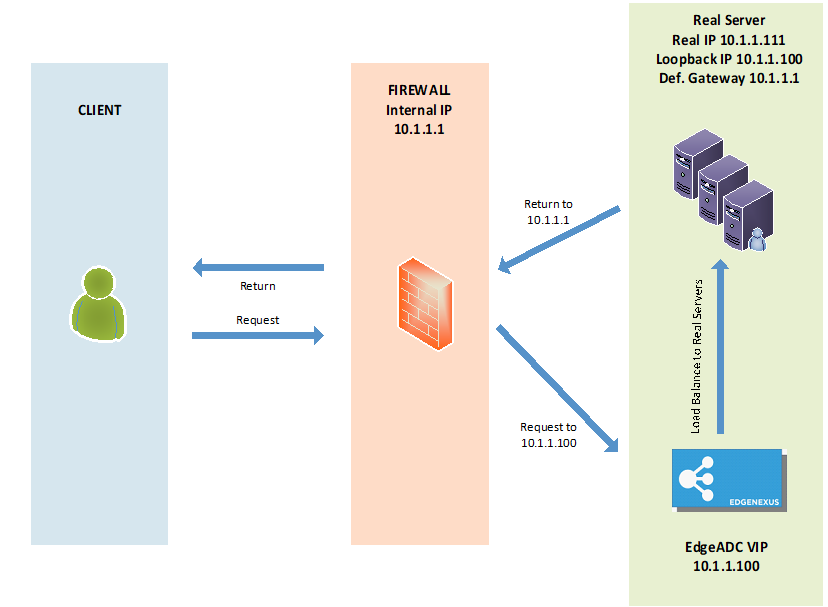Real Server Changes for Direct Server Return
Direct Server Return or DSR as it’s widely known (DR – Direct Routing in some circles), allows the server behind the ADC to respond directly to the client, bypassing the ADC on the response. DSR is only suitable for use with Layer 4 load balancing. Caching and Compression are not available when enabled.
Layer 7 load balancing with this method will not work as there is no persistence support other than source IP. SSL/TLS load balancing with this method is not ideal as there is only source IP persistence support.
How it Works
· The client sends a request to the EdgeADC VIP
· Request received by EdgeADC
· Request routed to content servers
· Response sent directly to the client without passing through EdgeADC

Required Content Server Configuration
General
· The content server default gateway should be configured as normal. (Not via the ADC)
· The content server and the load balancer must be in the same subnet
Windows
· The content server needs to have a loopback or Alias configure
with the IP address of the Channel or VIP
o Network metric must be 254 to prevent response to ARP requests
· Run the following in a command prompt for each network interface you have configured on the Windows Real Servers
netsh interface ipv4 set interface “Windows network interface name” weakhostreceive=enable
netsh interface ipv4 set interface “Windows loopback interface name” weakhostreceive=enable
netsh interface ipv4 set interface “Windows loopback interface name” weakhostsend=enable
Linux
· Add a permanent loopback interface
· Edit “/etc/sysconfig/network-scripts”
ifcfg-lo:1
DEVICE=lo:1
IPADDR=x.x.x.x
NETMASK=255.255.255.255
BROADCAST=x.x.x.x
ONBOOT=yes
· Edit “/etc/sysctl.conf”
net.ipv4.conf.all.arp_ignore = 1
net.ipv4.conf.eth0.arp_ignore = 1
net.ipv4.conf.eht1.arp_ignore = 1
net.ipv4.conf.all.arp_announce = 2
net.ipv4.conf.eth0.arp_announce = 2
net.ipv4.conf.eth1.arp_announce = 2
· Run “sysctl – p”
